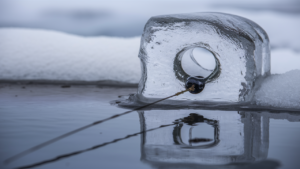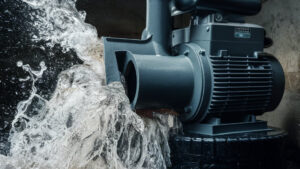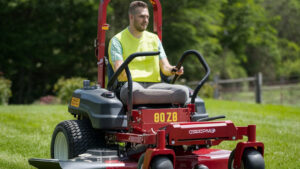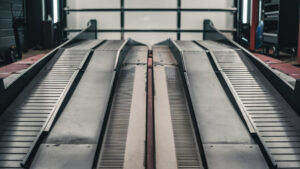To use a Weller soldering station, plug it in and set your desired temperature. Allow the soldering iron to heat up before beginning your work.
Recommended Best Soldering Iron for Electronics 2025
| Recommendation | Product |
| Best Overall | Fanttik T1 Max Soldering Iron Kit |
| Popular Choice | YIHUA 926 III Digital Display Soldering Iron Station Kit |
| Best Value | Weller 70 Watt Digital Soldering Station |
| Best Budget | Q-Ming Soldering Iron Kit |
| Another Excellent Pick | MEAKEST Soldering Iron Premium Kit |
Weller soldering stations are trusted tools for both professionals and hobbyists. Their reliability and efficiency make them ideal for various soldering tasks, from electronics repairs to DIY projects. Understanding how to use a Weller soldering station can enhance your soldering skills and ensure quality results.
Proper setup and maintenance are crucial for optimal performance. This guide will walk you through essential steps, including temperature settings, tip preparation, and cleaning techniques. With the right approach, you can achieve clean, strong solder joints and extend the lifespan of your soldering equipment. Dive in to learn more about maximizing your Weller soldering station experience.
Introduction To Weller Soldering Stations
The Weller soldering station is known for its quality and reliability. It offers features like adjustable temperature control and fast heating capabilities. These features enhance the user experience, making soldering easier and more efficient.
Safety is crucial when using this tool. Always wear protective eyewear to shield your eyes from solder splashes. Ensure your workspace is well-ventilated to avoid inhaling fumes.
Keep the soldering area clean and organized. This helps prevent accidents and makes finding tools easier. Always turn off the station when not in use to prevent fires.
Setting Up Your Weller Station
To set up your Weller station, first, assemble the components. Ensure you have the soldering iron, stand, and power supply. Carefully connect the soldering iron to the base unit. Make sure all parts fit snugly together.
Next, connect the power cord to an electrical outlet. Check that the power switch is off before plugging it in. Once connected, turn on the station and let it heat up. Wait for the indicator light to signal that the soldering iron is ready.
For initial testing, use a small piece of solder. Touch it to the tip of the iron. If it melts quickly, the setup is correct. Always ensure the tip is clean and properly tinned before starting any project.
Selecting The Right Soldering Tips
Choosing the right soldering tip is crucial for effective work. Different types of tips serve various purposes. Here’s a quick overview:
| Tip Type | Uses |
|---|---|
| Chisel Tip | Great for general soldering tasks. |
| Conical Tip | Perfect for precision work and small components. |
| Knife Tip | Ideal for making broad solder joints. |
Changing tips on a Weller soldering station is easy. First, ensure the iron is cool. Turn the plastic knurled nut by hand to remove the old tip. Then, attach the new tip by reversing the process. This method allows for quick changes, enhancing efficiency.
Temperature Control Mastery
Understanding temperature ranges is essential for effective soldering. The Weller soldering station can reach various temperatures. Common settings include 350°C for general soldering and 400°C for heavy-duty tasks. Adjust the temperature based on the materials being used.
Adjusting for different soldering tasks is simple. Lower temperatures work best for sensitive components. Higher temperatures are suitable for larger connections. Always ensure the tip is clean for optimal heat transfer. Use a damp sponge to clean it regularly.
| Task | Recommended Temperature |
|---|---|
| General Soldering | 350°C |
| Heavy-Duty Soldering | 400°C |
| Sensitive Components | 300°C |
The Tinning Process
The tinning process is essential for any soldering project. It involves coating the soldering tip with solder. This helps prevent oxidation and ensures better heat transfer. Without proper tinning, the soldering tip can become unusable.
To tin your Weller soldering iron, follow these steps:
- Heat the soldering iron to the desired temperature.
- Clean the tip using a damp sponge.
- Apply a small amount of solder to the tip.
- Spread the solder evenly across the tip.
- Turn off the iron and let it cool.
Regular tinning keeps the tip clean and enhances performance. Always re-tin the tip after use to maintain its quality.
Soldering Techniques With Weller
To hold the soldering iron correctly, grip it like a pencil. Use your thumb and index finger for control. The middle finger should support the base. This grip allows for precise movements and reduces fatigue.
For the perfect joint, heat both the component lead and the PCB pad. Apply solder to the joint, not the tip. Remove the solder and then the iron. Allow the joint to cool naturally. A shiny joint indicates a good connection.

Maintenance And Care
Cleaning the soldering tip is crucial for maintaining performance. Use a damp sponge to wipe off excess solder. Ensure the sponge is not soaking wet, just lightly damp. Wring it out thoroughly after using deionized (DI) water. This helps prevent mineral build-up on the soldering tip.
After cleaning, remember to retin the tip. Melt a small amount of solder on the end of the tip. This protects it from oxidation and keeps it in good condition. Regularly inspect the tip for wear or damage. Replacing a worn-out tip can improve your soldering results.
Routine maintenance of the Weller soldering station ensures long-lasting performance. Always unplug the station when not in use. Store the soldering iron properly to avoid accidents. Following these simple steps will help you achieve better soldering outcomes.
Advanced Tips And Tricks
To enhance soldering efficiency, always keep the soldering tip clean. Use a damp sponge to wipe off excess solder. This prevents oxidation and improves heat transfer. Tinning the tip with a small amount of solder is essential. It creates a protective layer and enhances performance.
Set the temperature appropriately for the materials you are using. Higher temperatures work for thicker materials, while lower settings suit delicate components. Changing tips quickly is possible by turning the knurled nut on the soldering pencil. This saves time and keeps your work efficient.
For troubleshooting common issues, check for proper power supply. Ensure the station is plugged in and the power switch is on. If the tip isn’t heating, inspect for any loose connections. Regular maintenance will help avoid these problems.
Accessories And Add-ons
Upgrading your Weller soldering station can make a big difference. Adding useful accessories enhances your experience. Consider a soldering iron stand. It keeps your workspace safe and tidy.
Another great add-on is a soldering mat. This protects your surfaces and gives you a better working area. A tip cleaner is also essential. It helps maintain your soldering tip in top shape.
Custom tips can improve precision for specific tasks. Choosing the right temperature controller ensures optimal performance. Finally, a magnifying glass helps you see small components clearly.
Projects And Applications
Weller soldering stations are great for various DIY projects. Start with simple circuit boards. They are fun and educational. Try creating LED lights or small gadgets. These projects help improve skills.
For professional uses, Weller stations excel in electronic repairs. Technicians often use them for precision soldering. They are perfect for assembling components in devices. Craftsmen also rely on them for jewelry making. Weller tools make intricate work much easier.
Frequently Asked Questions
How Do I Turn On The Weller Soldering Station?
To turn on the Weller soldering station, plug it into a power source. Adjust the temperature setting to your desired level. Wait for the iron to heat up, indicated by the temperature light. Once ready, it’s ready for use. Always ensure safety precautions are followed.
How Do You Use A Soldering Machine Step By Step?
1. Plug in the soldering machine and turn it on. 2. Set the desired temperature for your project. 3. Wait until the tip heats up. 4. Clean the tip using a damp sponge. 5. Apply solder to the tip to tin it.
6. Solder the components together as needed. 7. Turn off the machine when finished.
Do You Wet The Sponge On A Soldering Station?
Yes, wet the sponge on a soldering station. It should be lightly damp, not soaking wet. Wring it out thoroughly after using deionized (DI) water to prevent mineral buildup on the soldering tip. This helps maintain tip cleanliness and efficiency during soldering tasks.
How To Set Temperature On Weller Soldering Iron?
To set the temperature on a Weller soldering iron, adjust the dial or use the digital display. Turn it to your desired temperature setting. Wait a few moments for the iron to reach the new temperature. Always refer to your specific model’s manual for precise instructions.
Conclusion
Using a Weller soldering station effectively enhances your soldering skills. Proper setup and maintenance ensure optimal performance. Remember to always clean the soldering tip and select the right temperature. With practice, you’ll achieve professional results in your projects. Embrace the learning curve and enjoy the process of soldering!








